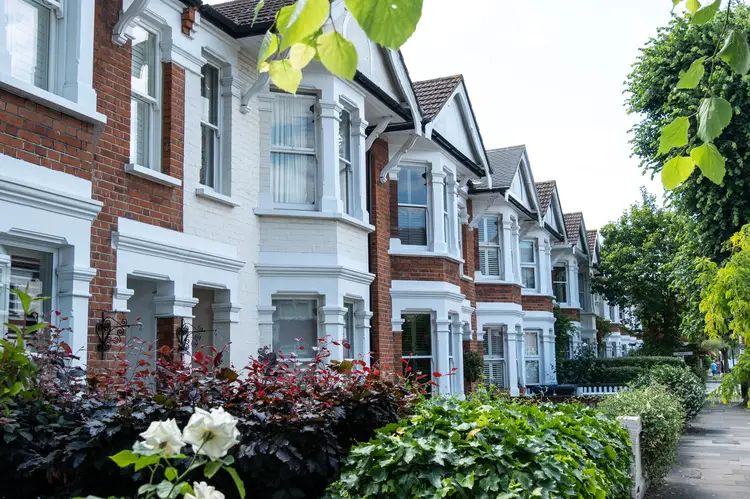For decades now, I’ve tried to educate people on how to do some basic analysis on investment real estate.
One of my rules is that you shouldn’t just look at the list price of a property.
A low-priced property isn’t a good investment just because the price is low (and something you can afford) and a high-priced property isn’t automatically a bad investment as a rental property (although high-end or large properties generally don’t generate as good of returns as mid-market and smaller properties).
Of course, if all you have is $100,000 to invest, you’re not going to be looking at properties priced higher than that.
But what about two properties where one is priced at 68,000 pounds and another is priced at 78,000 pounds?
That option was recently presented to me by a real estate agent I’ve known for some time. He wanted to promote the lower-priced property to his clients and asked me what I thought.
My first thought went to a standard for comparison that everyone should start with… what’s the price of each unit per square meter?
Size matters when it comes to real estate and you can usually rule out quickly some overpriced options if you look at the price per square meter (or per square foot for Americans, although most of the world sizes property in square meters, so you should learn to work in meters).
As it turned out, the 68,000-pound property was small enough compared to the 78,000-pound property that the price per square meter was better for the more expensive apartment. You got more for your money spending 78,000 pounds.
However, the difference in the price per square meter wasn’t enough to sway me to the higher-priced apartment. That is just the first step in any analysis that lets you do a basic apples-to-apples comparison between properties. Other factors then need to be analyzed: location, amenities, services, and quality.
The lower-priced property in this comparison is near the beach. The higher one is in a complex right on the beach. More amenities and services are available at the higher priced property, while quality between the two is essentially the same.
If you can get a bigger unit that’s at the beach with better amenities and services, why would you buy the 68,000-pound unit?
That’s the question I asked the real estate agent. The response was quick and straightforward… many people just want the cheapest property available.
Fair enough if that’s what the marketplace is telling them, but my guess is the marketplace needs to be educated.
The final analysis of any property for investment takes place in a spreadsheet.
You want to have a good idea of the projected net rental yield from a property.
Net yield projections for the 78,000-pound property come in higher than for the 68,000-pound property when you put pen to paper. Although the numbers could have come out in favor of the lower-priced unit, slightly higher nightly rates and higher expected occupancy won over slightly lower operating expenses.
Still, in this case, had the net yield come out better for the cheaper apartment, I’d probably still buy the more expensive one. Besides your net yield, you must think about potential appreciation and future resale.
It’ll be easier to sell the unit right at the beach than one five minutes from the beach. The beach unit should also see better appreciation over time because of the beach and other amenities in the complex.
Sometimes cheaper is just cheaper.
At the upper end of the market, an investor contacted me years ago for advice about buying a vacation home in a place where a house on the beach ran into multiple millions. He wanted to make sure his numbers made sense.
Having seen lots of expensive properties over the years in many different markets, I didn’t expect his projected net yields to be great. To my surprise, the spreadsheet he sent me showed a net yield of around 8%. That’s a great yield on any property, and the upper end of my general target range of 5% to 8%.
I dug into the numbers with the buyer to make sure each variable was accurate. The three big picture numbers are occupancy, nightly rate, and expenses.
Occupancy and nightly rates can be adjusted for seasonality, but typically a real estate agent or developer will give an annual occupancy rate and an average nightly rate to simplify things. Averages can be dangerous sometimes when you have big differences in seasonal numbers, so we broke things down into monthly revenue expectations.
A monthly breakdown also made sense in this case, as expenses for maintaining a high-end property when it’s empty can be as much as an occupied property when you have gardeners and maids coming regularly.
My biggest concern was the weekly rental rate, which was $40,000 a week.
People paying that much to rent a house on the beach isn’t a market I’m familiar with, so I asked a lot of questions, with the most important being, “Can the rental manager find enough renters with that kind of money?” The answer was positive, and the investor obtained redacted statements from the rental manager showing revenues for other properties he managed.
In the end, the investor bought the property with the plan to use it for family vacations a couple times a year and rent it out when he wasn’t there.
Sometimes higher prices can still bring great net yields.
Every time I go on a scouting trip the real estate agent asks, “What’s your budget?” I learned early on to say, “That depends on the property.” If you give an agent a number, that’s what he’s going to try to sell you. Give him a low number and he may not bother with you at all. Give him a high number and he could end up showing you properties that don’t generate a good net yield.
My response to agents evolved into “I’m looking for a property with the best investment potential.” That could be a fantastic yield, potential for quick appreciation, or both.
In the case of my agent friend with the 68,000-pound and 78,000-pound properties, he is working with the market. Clients say they want something less expensive, so they show them something less expensive. However, if they aren’t experienced investors, they may be asking the wrong questions.
Price matters when you’re on a budget, but don’t just buy something because it fits your budget. You still need to run the numbers to make sure it’s a good investment.
Stay diversified,
Lief Simon
Editorial Director, Global Property Advisor


